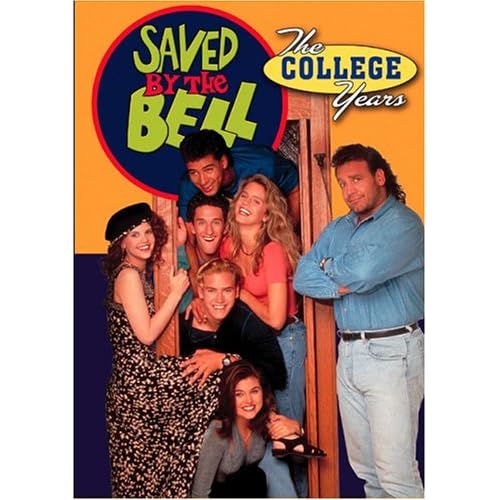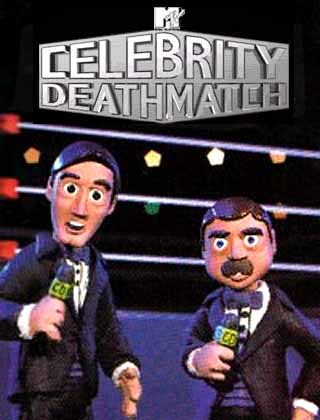
With all the movie remakes currently in the works, it's not a stretch to wonder if we've just plain run out of ideas. The Karate Kid and The Never-Ending Story are just a few decades young and already they're being treated like golden oldies in need of revamping for the new millennium. To dismiss this generation of hangers-on as a new fleeting phenomenon would be dishonest, though. Our coming-of-age era entertainment was equally if not more guilty of the same abhorrent offenses. We didn't call them rip-offs back then, though. We called them spin-offs.
A spin-off is an admittedly lazy creative process of launching a new program. Relying on the popularity of an already successful show, spin-off creators simply take existing characters and separate them from their natural habitat in an established program. The moment audiences respond remotely positively to a secondary character, producers often jumped on the spin-off bandwagon. The theory was, you liked seeing them on this show for five minutes, why not thirty? It seemed a logical leap, and certainly easier than coming up with an original idea.
In reality, some spin-offs work better than others. There's a fragile balance to keep: true enough to the original characters to ride the wave of the established show's popularity, but original enough not to appear a complete facsimile of the first show. Most of the successful spinoffs relied on repackaging standby semi-major characters, though some managed to coast on showcasing minor or one-time guests. The best of them went on to outstrip the fame of the show from which they were spawned. The worst faded into obscurity as poorly thought-out network schemes to milk a show's popularity for all it was worth.
There were many, many spin-offs in the 90s, but let's take a look at a few of the most-watched:
A spin-off is an admittedly lazy creative process of launching a new program. Relying on the popularity of an already successful show, spin-off creators simply take existing characters and separate them from their natural habitat in an established program. The moment audiences respond remotely positively to a secondary character, producers often jumped on the spin-off bandwagon. The theory was, you liked seeing them on this show for five minutes, why not thirty? It seemed a logical leap, and certainly easier than coming up with an original idea.
In reality, some spin-offs work better than others. There's a fragile balance to keep: true enough to the original characters to ride the wave of the established show's popularity, but original enough not to appear a complete facsimile of the first show. Most of the successful spinoffs relied on repackaging standby semi-major characters, though some managed to coast on showcasing minor or one-time guests. The best of them went on to outstrip the fame of the show from which they were spawned. The worst faded into obscurity as poorly thought-out network schemes to milk a show's popularity for all it was worth.
There were many, many spin-offs in the 90s, but let's take a look at a few of the most-watched:
Cheers-->Frasier
Here's an incidence of a seriously popular spin-off. It ran eleven seasons, the same as its predecessor, Cheers. The show followed regular Cheers patron Dr. Frasier Crane as he hosts a pop psychology call-in radio show. His brother is also a psychiatrist, and a very neurotic one at that. Frasier takes in his aging father and his full-time character, and hilarious, toned-down subdued antics ensue. The show was witty and didn't talk down to its audience, which was always a refreshing notion for a sitcom. Though it wavered a bit in its final years, it remains one of the most successful spin-offs to date.
Perfect Strangers-->Family Matters
Perfect Strangers: two wacky mismatched cousin roommates with differing nationalities. Family Matters: charming middle-class black family. Tough to see the connection, right? Winslow matriarch Hariette Winslow started as a character on Perfect Stranger and was deemed worthy of further exploration. Of course, then they brought in Urkel and everything changed plot focus-wise, but it was a decent staple of the popular TGIF lineup. Not too shabby for a spin-off.
Buffy the Vampire Slayer-->Angel
If you think vampires are the hot new thing, you're probably suffering from acute memory loss. I'd get that checked out if I were you. In the 90s, it was all about Buffy. Her vampires didn't need skin sparkling gimmicks, just her pure ass-kicking finesse. The show spun off Angel in 1999, featuring Buffy regular David Boreanaz as its title character. Angel was a vampire cursed with the restoration of his human soul, thus racking him with guilt and internal struggle. It was a little hokey, but if you're into that kind of thing, it was a pretty for Buffy seconds.
Golden Girls-->Empty Nest-->Nurses + Golden Girls-->The Golden Palace
Talk about a strangled route on this one. The Golden Girls actually split into two separate spin-off tracks, one focusing on a once-featured neighbor couple and the other rebranding the original as a Bea Arthur-less project. None of them assumed the level of popular of Golden Girls, but they did reasonably well for spin-offs.
On track one, we had Empty Nest, a project that had a bumpy road to production. Originally intended to spin from the GG episode Empty Nests about a neighbor couple whose children had all flown the coop. Unluckily for producers, the characters bombed, so they brought in entirely new characters with a different premise altogether: a widower whose post-college aged daughters come back to live with them. They still called it Empty Nest, which of course makes no sense. It was a full nest. The hen was gone, but all the chicks were there. Sounds full to me. Guess they just wanted to spare themselves the embarrassment of admitting they had to can the original concept altogether.
Remarkably, Empty Nest also managed to spurn a spin-off, Nurses. The Nurses in question worked at the same hospital as Dr. Harry Weston of Empty Nest. The show was okay, but the first-season ratings were in a bit of a slump. In response, show writers played all sorts of cheap tricks including like adding new characters and completely changing existing ones. Regardless, the show lasted 3 seasons, so they must have been doing something right.
Meanwhile, on track two we had the McLanahan/White/Getty vehicle, The Golden Palace, in which Don Cheadle gives his second best performance as a hotel manager. Throw in Cheech Marin, and you've got yourself a zany bunch of hotel proprietors. That was the idea, at least. The theme song was a cheesy musakified version of The Golden Girls' "Thank You For Being a Friend". It only lasted one season, partially because of its terrible time slot and partially because it wasn't all that great.
Animaniacs-->Pinky and the Brain
After seeing them on Animaniacs, how could you not give these little lab mice their own half hour to shine? If nothing else, I'm sold on theme song alone. It's so straightforward. One is a genius, the other's insane. So incredibly simple, yet so humorous. Well played, Warner Bros.
Beavis and Butthead-->Daria
This is the first half of the first episode...intrigued? They're all up there. On YouTube. Just don't tell the authorities. They've been uploaded backwards. Ingenius, no? Now go watch them before they're gone.
Here's a case in which the spin-off was entirely different from the series from which it originated. Daria had none of Beavis and Butthead's bonehead humor. It was smart, sarcastic, quick-witted, and hilarious. It was as sharp as B&B was dumb. Our protagonist Daria was something of a social outcast, giving voice to misfits and brains everywhere. The show so perfectly captured the stereotypes of high school, though it treated its subjects with kindness even while mocking them. It had heart, but just when you thought they were going in for the kill on an aww moment, they triggered back with a biting retort.
Party of Five-->Time of Your Life
Another one-seasoner, Time of Your Life was meant to launch Jennifer Love Hewitt's character from Party of Five character into her own series as she tackled New York City. It didn't even make it all the way through its first season before cancellation, if that gives you any hints to the critical reception. It was really pretty terrible.
90210-->Melrose Place-->Models, INC
Melrose Place was intended as an expansion of the 90210 franchise to reach out to the twenty-something demographic. The Jake Hanson character originally appeared on 90210 as a bad-boy biker hired to do some construction for Kelly's family. The two engage in a brief tryst, which was conveniently resolved in time to transfer Jake to the MP apartment complex setting. The show went on to establish its own following and featured much darker storylines than its after-school-special-leaning predecessor.
I'm going to open myself to mockery and admit that as a child, I was a shameless Models, Inc. fan. Really, it was awful, but I was probably among the only disappointed people upon news of the cancellation following the first season. I mean, they ended it with To Be Continued... I heard they eventually aired the continuation on E!, but obviously I missed it. I may never know these answers.
The Tracey Ullman Show-->The Simpsons
You have to give some credit to the longest running sitcom of all time, especially considering it's a cartoon. The Simpsons premiered as animated shorts on the Tracey Ullman Show, featuring a dysfunctional family and their humorous episodic experiences. It may not still be up to its original quick-witted standards, but they do still have their original cast. That's almost as good.
Good Morning Miss Bliss-->Saved By the Bell-->Saved by the Bell: The College Years-->Saved by the Bell: The New Class
How many times can you repackage a franchise? That's the question Saved By the Bell producers must have asked themselves, obviously putting faith in the answer "a whole lot". The original Disney Series centering around junior high students and their teacher played by Hayley Mills was cute enough, but nothing cult fanship worthy. Producers tweaked the shows into the California-based Saved by the Bell and launched a franchise that begot awesome product tie ins like my previously mentioned Zackberry flavored shampoo. The show wasn't really one for continuity, but it made its shaky way to graduation and we assumed they'd all call it a day.
Not so. Featuring a distinctly huskier Zack Morris and some god-awful 90s flannel getups, Saved by the Bell: The College Years, ran one lone season from 1994-1995. It was an effort, sure, but not a particularly valiant one.
Oh, and there was an even worse but far longer-running spin-off, Saved by the Bell: The New Class, retaining only Screech and Mr Belding from the original. And really, I doubt those two were swatting away dozens of projects. They needed the work.
A few of the originals drop by The New Class
Spin-offs can obviously be very hit or miss. Some characters have the potential to carry their own series, while others are better left fading into the background. One thing's for sure, though: if you can grind a franchise into the ground, you might as well give it your best shot. You might get a Frasier, you might get a Time of Your Life, but the odds seem pretty well-stacked in your favor.





